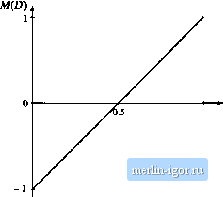
 | |
|
Строительный блокнот Introduction to electronics Buck converter 1 ТЛПР ShcA: cortverter 2 © Fig, 6.11 Deiivution ol bi itlgc inveitcr (H-bridge); (a) differemial connection of load across ontpiils of buck converters, (b) bypassing load by capacitor, (c) combining series inductors, (d) circuit (c) redrawn in its usual form. + V -V\r- Fig, 6.11 Continued  1 D Fig, 6.12 Conversion ratio of the H-bridge inverter circuit. 6.1 Circuit Manipiuations age V2 = DV The differential load voltage is (6.12) Slitiplifixation leads to V = i2D- l)V, (f,.B) This equation is plotted in Fig. (1.12. It tan be seen the output voltage is positive for£> > 0,5, and negative for D < 0.5. If the duty eyele is varied sinusoidally about a quiescent operating point of 0.5, then the otit-put voltage v/ill be sinusoidal, with node bias. The circuit of Fig, (i.l 1(a) can be simplified. It i.s usually desired to bypass the load direcl:ly with a capacitor, as in Fig. 6.11(b). The two inductors are now effectively in series, and can be combined into a single inductor as in Fig. fj. 11(c). Figure 6.11(d) is identical to Fig. 6.11(c), but is redrawn for clarity. This circuit is commonly called the H-bridge, or bridge inverter circuit. Its use is widespread in servo amplifiers and single-phase inverters. Its properties are siinilar to those of the buck, converter, from which it is derived. Polyphase inverter circuits can be derived in a similar manner. A three-phase load can be connected differentially across the outptits of three dc~dc converters, as illustrated in Fig. 6.12. If the three-phase load is balanced, then the neutral voltage K will be equal to the average ofthe three converteroutput voltages: (6.14) dc source © Converter 1 Converter 2 Converter 3 1 ТГ I- Зас load -CZh Fig. 6.12 tieneiatioii of dt;-30ac itiverter by differential connection of Щ load. |